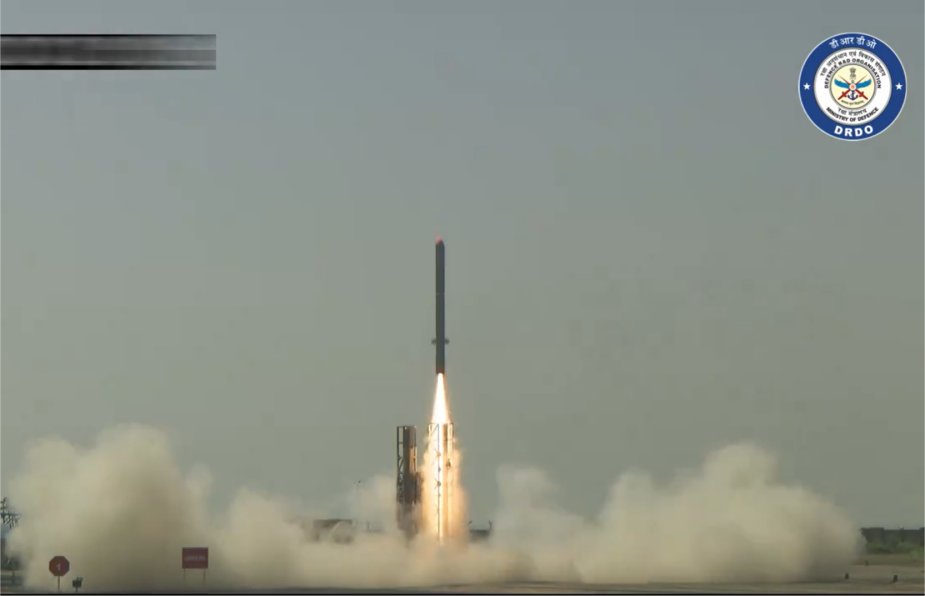According to information published by the Indian MoD on April 18, 2024, the Defence Research and Development Organisation (DRDO) successfully testing the Indigenous Technology Cruise Missile (ITCM) from the Integrated Test Range (ITR) at Chandipur, Odisha.
Follow Navy Recognition on Google News at this link
 Successful flight of the Indian indigenous cruise missile. (Picture source: DRDO)
Successful flight of the Indian indigenous cruise missile. (Picture source: DRDO)
During the flight, the missile's trajectory was closely monitored through an array of Range Sensors, including Radar, Electro Optical Tracking Systems (EOTS), and Telemetry strategically placed around the area to cover the entire flight path. Additionally, the missile was observed from a Su-30-Mk-I aircraft of the Indian Air Force, ensuring comprehensive data collection on its performance.
A standout feature of this test was the missile's ability to follow a predefined path via way point navigation while maintaining a very low altitude, showcasing advanced sea-skimming capabilities. This capability is crucial for evading radar detection and enhances the missile's effectiveness in operational scenarios.
The successful test also confirmed the reliability of the indigenous propulsion system, developed by the Gas Turbine Research Establishment (GTRE) in Bengaluru. The ITCM is further equipped with cutting-edge avionics and software designed to optimize its operational reliability.
India's cruise missile needs
India's strategic need for a powerful cruise missile system is primarily driven by its geographic and strategic contexts, facing security challenges from neighboring countries like Pakistan and China. A robust cruise missile capability is integral for maintaining a credible defense posture and deterrence strategy.
Cruise missiles like the BrahMos, known for their speed and precision, allow India to strike swiftly and accurately at high-value targets deep within enemy territory without crossing borders, thereby maintaining a strong deterrent without escalating conflicts to full-scale warfare.
Moreover, the BrahMos's ability to carry both conventional and nuclear warheads adds a crucial element to India's nuclear deterrence strategy. Its high speed and maneuverability make it a challenging target for existing missile defense systems, thereby providing India with a potent first-strike or retaliatory strike option that complicates enemy defensive calculations.



